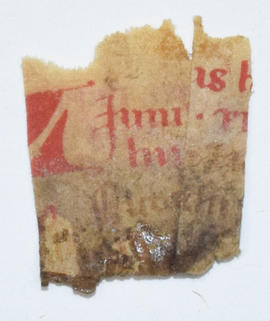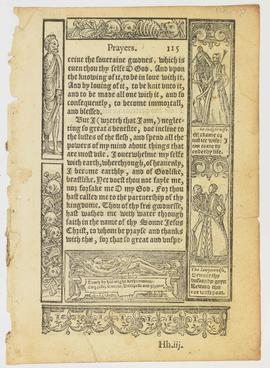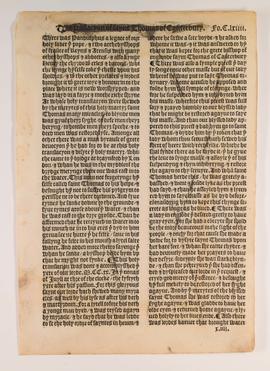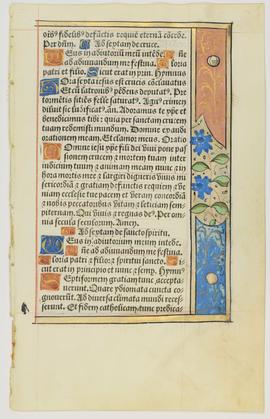Item is a leaf from an edition of Virgil's epic poem the Aeneid printed by Giunta in Lyon in 1505. The leaf features text from Book V of the poem and a half page woodcut illustration depicting the Trojan hero Aeneas consulting with his companions Nautes and Acestes (at upper right) while the Trojans rest in Sicily before continuing their voyage. The woodcuts were created by an unknown late master of the Gruninger workshop and were reused in later editions in 1519 and 1522.
The Aeneid was written between 29 and 19 BCE by the Roman poet Virgil, and is one of the greatest classical epic poems. The Aeneid tells the story of the aftermath of the fall of Troy to the Greeks, and the subsequent founding of the Roman nation. A partial translation of the text of this leaf reads:
Choose out the old men full of years and sea-worn matrons, and all of your company who are weak
and fearful of peril, and let the wearied find their city in this land. This city, if you permit the name,
they shall call Acesta.
Then, indeed, kindled by these words of his aged friend, he is torn asunder in soul amid his cares.
And now, borne upwards in her chariot, black Night held the sky, when there seemed to glide down
from heaven the likeness of his father Anchises and suddenly to utter thus his words: "Son, dearer to
me than life, in days when life was mine; son, tested by Illium's fate! I come hither by Jove's
command, who drove the fire from your fleet, and at last has had pity from high heaven. Obey the fair
advice that aged Nautes now gives; chosen youths, the bravest hearts, lead to Italy. A people hard and rugged in nature must you subdue in Latium. Yet first approach the nether halls of Dis, and through the depths of Avernus seek, my son, a meeting with me.






















![Gassho Dojikun [combined book of children's textbook]](/uploads/r/mount-royal-university-archives-and-special-collections/5/3/4/5340f764ed7e3af64e8e4a014b5c01a00d29a186e16c14547b2bb50d9054ebc3/0083-10_142.jpg)

































